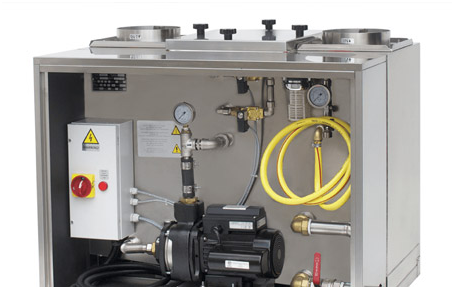
When effective crankcase air floats (PCV) became fashionable in 1968, the recycling of crankcase vapours eliminated blowby emissions as a notable delivery of automobile pollution. When Evaporative Emission Control devices gadgets had been introduced in 1971, charcoal canisters and sealed gasoline structures removed gas vapours as a few different problems that contributed.. Exhaust gas recirculation (EGR) was introduced in 1973, which lowered dangerous oxides of nitrogen (NOX) emissions. But the maximum widespread upload-on came in 1975 when the automakers had been required to put in catalytic converters on all new automobiles.
CATALYTIC CONVERTERS
Original system converters are designed to last up to 150,000 miles or more, When leaded gas modified into however available, gasoline switching to save cash brought about the premature death of many a converter. Coolant leaks inside the combustion chamber can allow silicon to go into the exhaust and harm the converter. Phosphorus, which is observed in motor oil, can foul the converter if the engine is burning oil because of worn valve publications or jewellery. The modern-day motor oils have significantly decreased tiers of ZDDP (phosphorous) anti-put on additives to lessen the risk of converter contamination.
Converters may additionally fail in the event that they get too hot. This may be resulting from unburned gas within the exhaust. Contributing elements include a wealthy gasoline aggregate, ignition misfire (a fouled spark plug or lousy plug cord) or a burned exhaust valve that leaks compression. Fuel in the exhaust has the equal impact as dumping fuel on a bed of glowing embers. Things get real hot actually rapidly. If the converter temperature climbs sufficiently sufficiently, it is able to soften the ceramic substrate that facilitates the catalyst causing a partial or whole blockage indoors. This will boom backpressure, stopping the engine from exhaling and robbing it of electricity. Fuel intake can also shoot up and the engine can also additionally revel in gradual at better speeds. Or, if the converter is completely plugged, the engine may additionally stall after starting and no longer restart.
PCV
PCV valves are normally considered as a maintenance object like spark plugs, and want to be inspected and replaced periodically (commonly every 50,000 miles). The PCV valve syphons blowby vapours from the crankcase into the intake manifold so the vapours do not get away into the surroundings. One of the beneficial outcomes of PCV, besides disposing of blowby emissions, is that it pulls moisture out of the crankcase to increase oil lifestyles. Moisture can shape acids and sludge which could cause engine harm.
OTHER EMISSION CONTROL PARTS

On older engines with a carburetor, one among numerous emission-controlled gadgets may be used to reduce emissions during warmth-up. Fuel evaporates slowly while it’s miles bloodless, so heating the air before it enters the carburetor or throttle frame advances gasoline vaporisation and lets in the engine to move without troubles to preserve a balanced air/gasoline aggregate. Most such engines have a heated air intake machine that draws heat air from a variety throughout the exhaust manifold into the air purifier
Mild Steel emission control device
Suitable layout with excessive universal overall performance the slight metal emission control tool offers rugged & sturdy features for lengthy-length use. It is also able to address numerous varieties of emissions primarily based totally on their stage. Here is a greater specification element.
A three-phase fugitive emission control device
This emission manipulation tool is used to recycle the pollutants debris which emit from the diesel engine. The stepped forward emission easy out technique is likewise beneficial to shield the environmental surroundings. Here get greater inquiry with product element,
What are the different types of emission control devices?
Some of the more famous emission management gadgets mounted on the automobile are: EGR VALVE, CATALYTIC CONVERTER, AIR PUMP, PCV VALVE, CHARCOAL CANISTER. Automotive emissions are managed in three tactics, one is to sell extra entire combustion so that there are much less via products.
Emission Control Systems
The want to govern the emissions from motors gave upward push to the computerization of the automobile. Hydrocarbons, carbon monoxide and oxides of nitrogen are created at a few stages in the combustion approach and are emitted into the environment from the tailpipe. There also are hydrocarbons emitted because of vaporisation of fuel and from the crankcase of the automobile.The easy air act of 1977 set limits as to the quantity of every of these pollutants that could be emitted from a car. The manufacturers answer modified into the addition of positive.Pollution control gadgets and the advent of a self adjusting engine. 1981 was the primary of these self-adjusting engines. They have been known as feedback gasoline manipulate structures.
Conclusion
Emission control devices, in vehicles, are hired to restrict the discharge of noxious gases from the internal-combustion engine and other additives. There are three principal resources of these gases:When fine crankcase air drift (PCV) became trendy in 1968, the recycling of crankcase vapours removed blowby emissions as a brilliant delivery of automobile pollutants. When Evaporative Emission Control Systems had been brought in 1971, charcoal canisters and sealed fuel systems removed gasoline vapours as a few different difficulties that contributed.. Exhaust fuel recirculation (EGR) was brought in 1973, which reduced harmful oxides of nitrogen (NOX) emissions. But the most vast upload-on got here in 1975 when the automakers were required to put in catalytic converters on all new cars.







